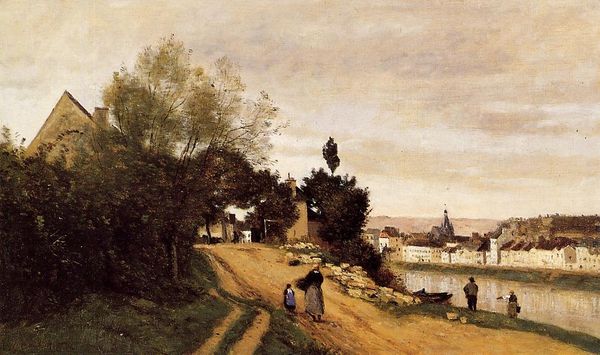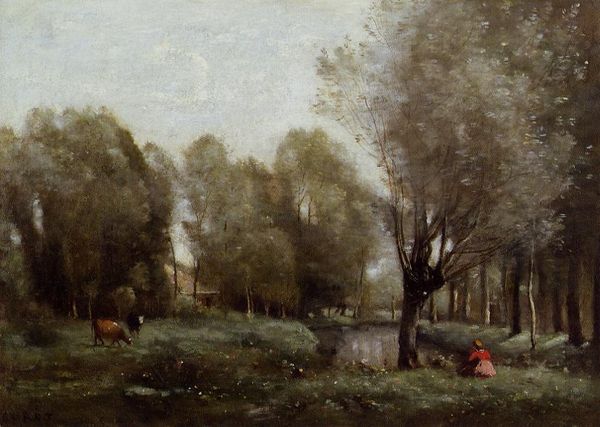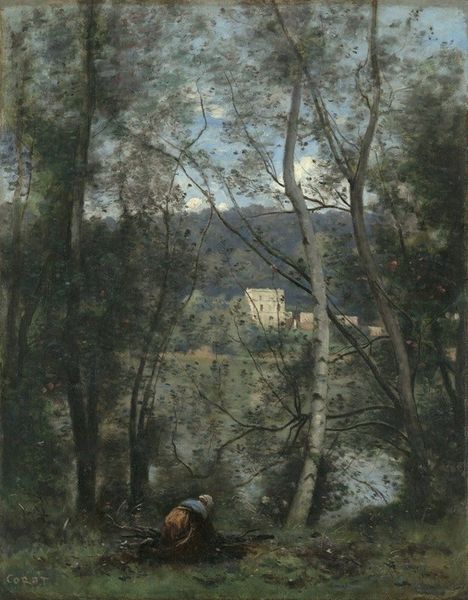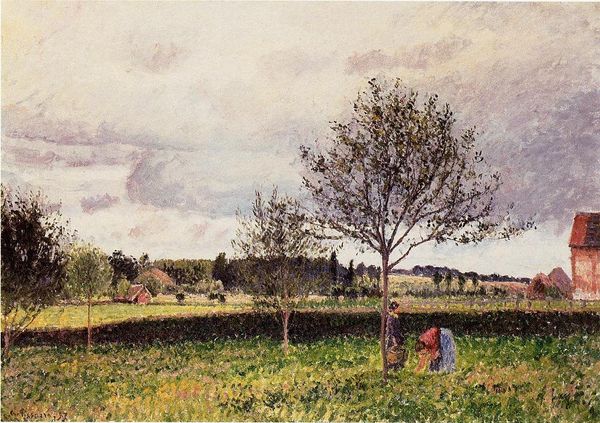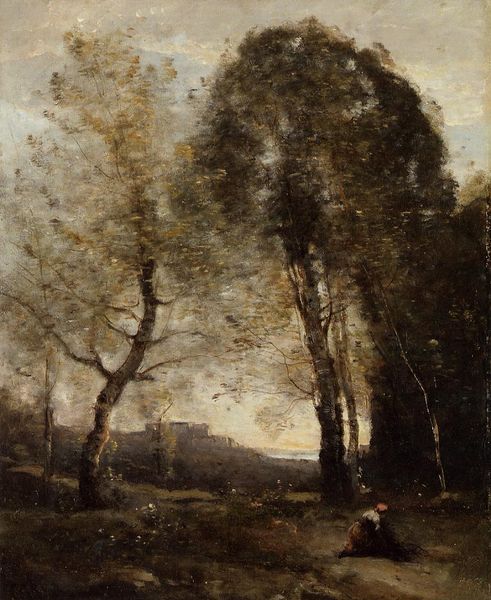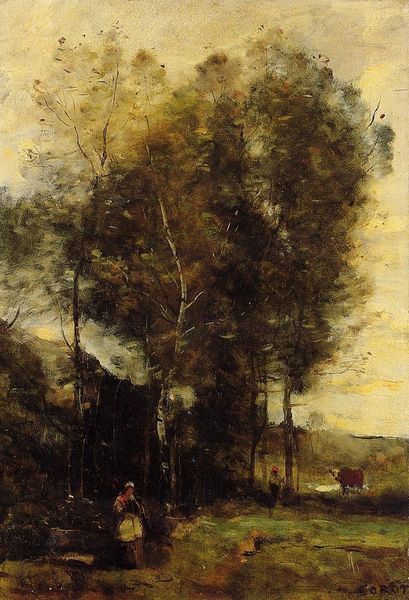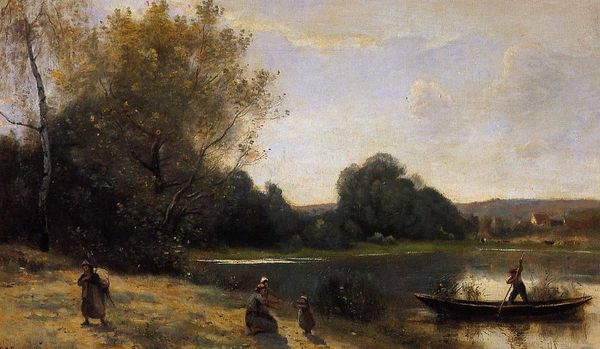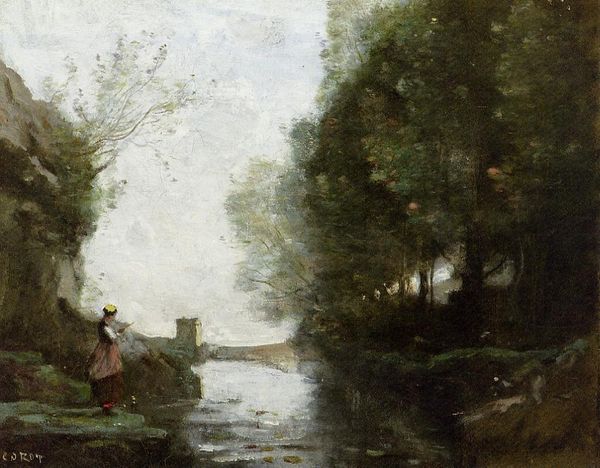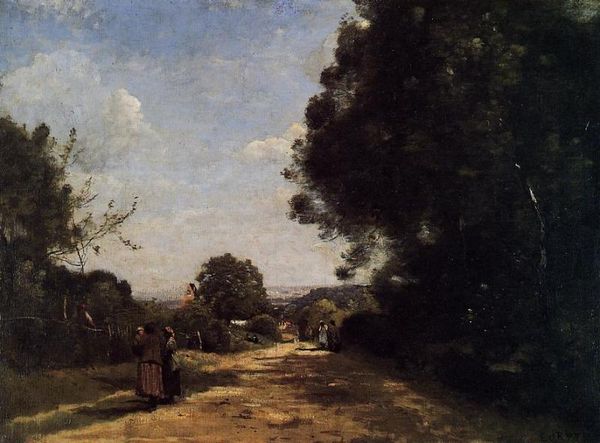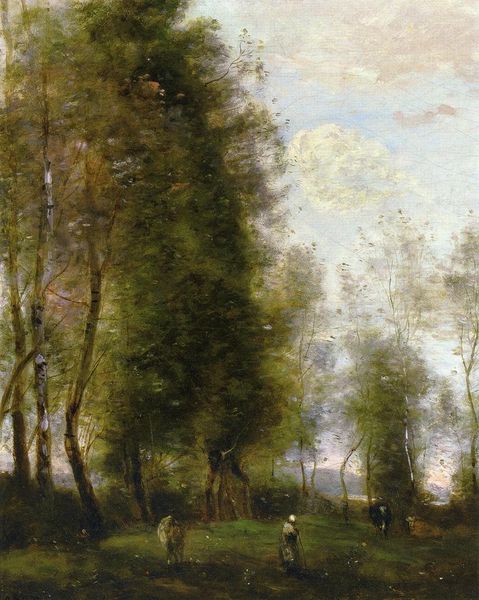
Copyright: Public domain
Curator: Stepping closer, we’re met by “The Verdant Bank,” an oil painting crafted around 1865 by Camille Corot. Its immediate presence evokes a pastoral dream. Editor: Dreamy is right. The silvery light feels nostalgic, and almost melancholy. Is it the muted palette, or perhaps the subtle haze over the landscape? Curator: Corot often worked en plein air, striving to capture the transient effects of light and atmosphere. Notice how the impasto technique lends the foliage a tangible, almost palpable texture. Editor: The figures add another layer. What can we read in that solitary woman gathering something near the water, with the small, dark figure of perhaps a goat or sheep near her side? This painting also contains the cultural symbolism of church, water and sky. How might the scene's implicit binaries – nature versus religion, solitude versus community – reflect broader societal tensions? Curator: That's fascinating. This painting’s realism, mixed with folk-art aspects, connects with a period increasingly defined by class anxieties. Country life offered not just an escape, but also a locus for imagining alternative social possibilities. Corot's gentle treatment, especially of women working the land, feels particularly radical given the broader, often harsher, depictions of working-class women at that time. Editor: Indeed, this work doesn’t just offer a glimpse of rural existence; it seems to almost romanticize a different kind of space and experience, far removed from the rapidly industrializing cities. I wonder if there’s an element of cultural critique embedded in this tranquil scene. It offers visual symbols tied with a particular cultural and religious meaning; for instance, we may find specific local meaning by finding records about the symbolism of the represented church and how that plays into cultural landscape meanings about memory and location. Curator: This landscape transcends the literal representation of place, becoming a meditation on nature, labor, and social dynamics within a specific historical moment. I'm reminded how even quiet scenes can carry profound socio-political implications. Editor: And I find that exploring visual cues like the figures of church, landscape, animals, helps us uncover cultural memory. Thank you for sharing this.
Comments
No comments
Be the first to comment and join the conversation on the ultimate creative platform.

